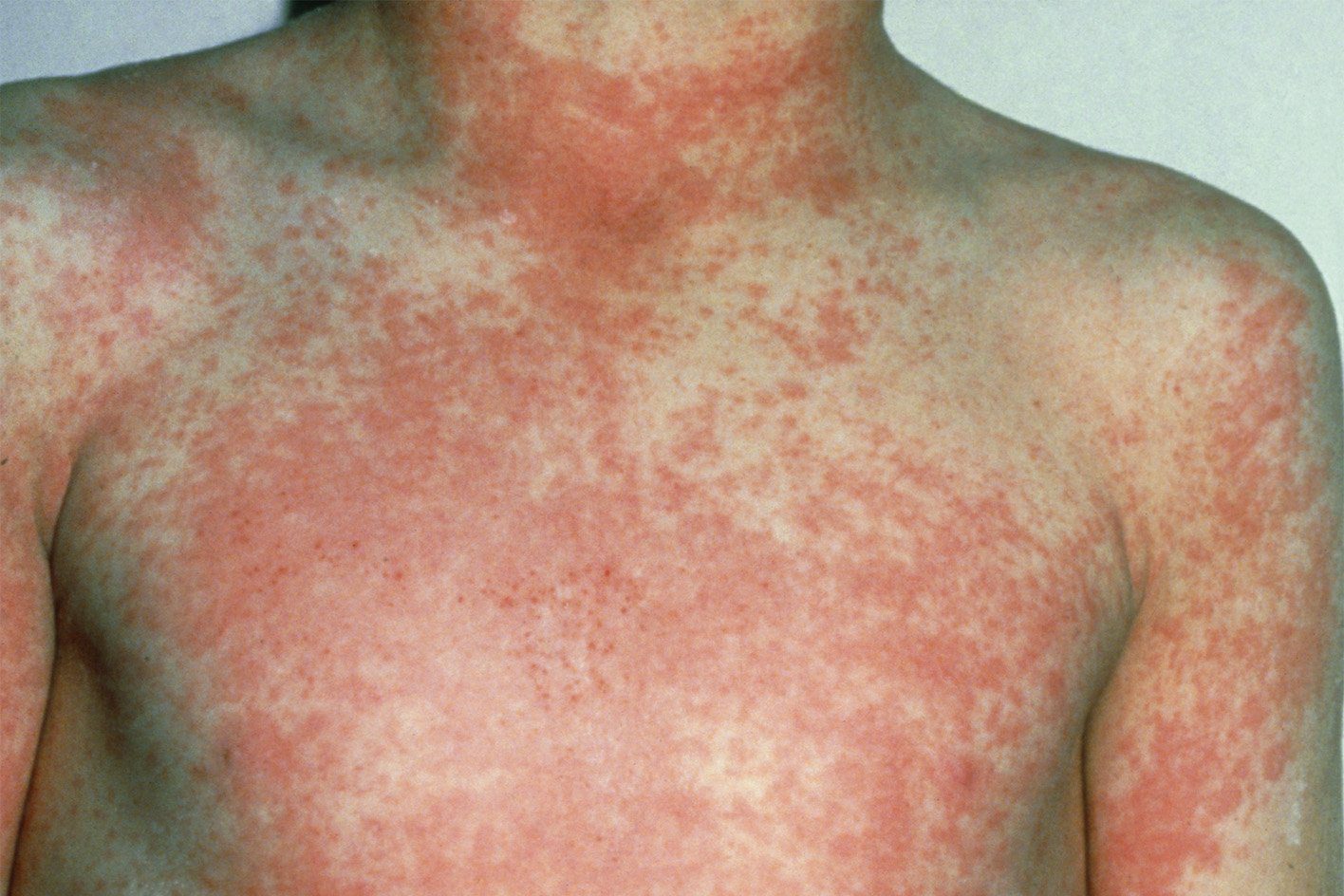Parents in the UK have been told to keep an eye out for Strep A infections following the recent deaths of seven children. Here’s everything you need to know about this prolific bacteria, the diseases it can cause, such as scarlet fever, and their symptoms, and the ongoing outbreak in the UK.
What is Strep A?
Also known as Group A streptococcus (GAS), most Strep A infections are caused by the bacteria Streptococcus pyogenes. The bacteria is commonly found in the mouth and throat of healthy children, as well as a small percentage of adults.
Some people carry it without any symptoms and it’s most commonly associated with mild infections of the skin, but it can also cause an array of conditions, including strep throat (aka bacterial tonsillitis), scarlet fever, cellulitis, rheumatic fever, impetigo, and streptococcal toxic shock syndrome.
Because Strep A infections can cause a wide variety of diseases, different symptoms can appear with the infection. However, scarlet fever is among the chief concerns in the UK at the moment.
What are the symptoms of scarlet fever?
The UK Health Security Agency (UKHSA) reported 851 cases reported of scarlet fever last week, compared to an average of 186 cases in previous years.
Parents in the UK have been advised to closely look out for symptoms of this disease, which include a sore throat, headache, and fever, along with a fine, pinkish, or red body rash with a sandpapery feel.

The rash looks pink or red on white skin. Health authorities in the UK warn that it may be harder to see on brown and black skin, but you can still feel it. Image credit: NHS
Symptoms will often be mild, but the disease can be incredibly infectious, easily spreading through coughs, sneezes, and skin-to-skin contact.
Fortunately, treatment with antibiotics can manage these infections, but it’s important that the disease is identified and dealt with promptly. It’s also worth considering that amoxicillin, an antibiotic commonly used to treat a variety of bacterial infections including GAS, is currently in short supply in some parts of the world, most notably the US.
Public health bodies in the US have not yet warned about any rise of Strep A cases this year, but it’s possible that the country could face a similar picture to the UK.
Why are cases of Strep A so high this year?
On very rare occasions, the bacteria can get into the bloodstream and cause a severe illness known as invasive Group A strep (iGAS). Seven children have reportedly died from this infection since September 2022. Five of these cases were children aged under 5, while one was 7 and another was 12.
Many people are asking why cases of group A Strep infections are so high in the UK this year. While there are likely to be a few factors to explain the uptick, some experts are speculating that it could be a result of the bacteria taking advantage of kids’ lower immunity after spending the past two years under COVID-19 lockdowns.
“Children normally catch scarlet fever in their first year at school, if at all. We know that scarlet fever rates plummeted during 2020-2021. We, therefore, think that school-aged children may not have built up immunity to Strep A, and so we now have a much larger cohort of non-immune children where Strep A can circulate and cause infection”, commented Professor Shiranee Sriskandan, Professor of Infectious Disease at Imperial College London.
“This is coupled with an unexpected rise in Strep A infections at the wrong time of the year, when winter viruses like RSV are circulating.”
“Lots of infections became rarer during the restrictions of the recent pandemic and are now coming back rapidly as mixing normalizes. GAS is no exception and we have been seeing increasing numbers of cases in recent months”, added Professor Adam Finn, Professor of Paediatrics at the University of Bristol.
The content of this article is not intended to be a substitute for professional medical advice, diagnosis, or treatment. Always seek the advice of qualified health providers with questions you may have regarding medical conditions.
Source Link: Are Lockdowns Linked To Rise Of Fatal Strep A Infections In UK?